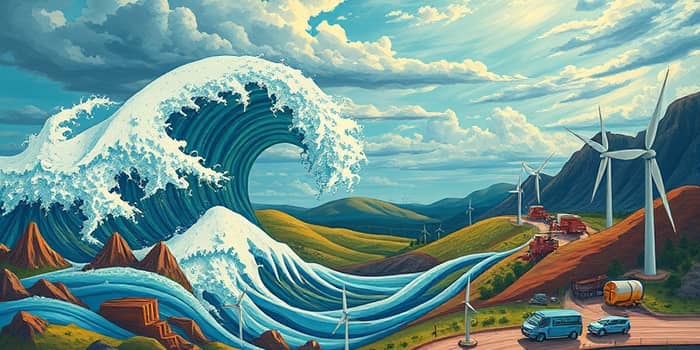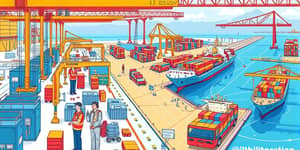
Commodity markets periodically experience extended booms and busts that reshape global investment patterns. These prolonged waves of price movements, known as supercycles, influence how capital and resources flow across industries, geographies, and time horizons.
A commodity supercycle is a sustained period, often spanning a decade or more, during which prices move significantly above or below their long-term averages. Such cycles emerge when rapid demand growth outpaces supply expansion, leading to price surges that eventually attract new investment and overshoot equilibrium.
Historically, supercycles can endure well beyond typical business cycles. Prices climb as factories, utilities, and construction projects consume raw materials faster than mines and wells can ramp up production. Once new capacity comes online, oversupply triggers a downturn, concluding the cycle.
Research by the Bank of Canada identifies four prominent commodity supercycles in the past century. Each was driven by distinct demand shocks and supply dynamics:
Even amid these long-term uptrends, markets endured multiple corrections of 20–30%, underscoring the volatility embedded within supercycles.
Several factors combine to ignite and sustain supercycles:
Long development lead times—often 7–10 years for new mines—amplify these imbalances, extending price peaks before fresh capacity arrives.
Supercycles reorient capital in several key ways:
For instance, the S&P 1500 Metals & Mining index outperformed the S&P 500 during past commodity booms, reflecting investor appetite for resource plays when prices peak. However, lags in project financing mean that capital inflows often arrive too late, reinforcing the bust phase.
Copper: A bellwether metal tied to electrification, renewable energy, and infrastructure. Benchmark Mineral Intelligence forecasts copper demand rising from 27 million tonnes in 2023 to 38 million tonnes by 2032, averaging 3.9% annual growth. Strained supply dynamics may prolong price strength before new mines mitigate deficits.
Energy Markets: World Bank projections for 2024 place oil near $81 per barrel, reflecting tight upstream investment. Natural gas prices show regional divergence, but global underinvestment warns of future supply risks.
Critical Minerals: Lithium, cobalt, and molybdenum underpin battery production and green technologies. Soaring demand for critical minerals in EVs and storage systems highlights the next frontier of resource competition.
Supercycles heighten price volatility, complicating macroeconomic planning and poverty reduction for resource-dependent nations. Multi-decade low commodity valuations in late 2023 suggested potential for mean reversion, yet sudden shifts can derail budgets and inflation forecasts.
Inflation often accelerates during commodity booms, prompting central banks to tighten policy. Meanwhile, governments explore market-based risk management tools and strategic reserves, though no silver bullet exists to eliminate volatility.
Debate rages over the prospects for a fresh supercycle. Proponents point to energy transition demands, persistent underinvestment leading to bottlenecks, and geopolitical fragmentation as fresh catalysts. Critics note divergent price paths across commodities and warn that abundant stockpiles in some markets may cap upside.
By late 2023, the CRB/S&P 500 ratio hit 0.15, a 50-year low, fueling arguments for a rebound. Yet institutions like the World Bank caution that not all commodity segments will rally in unison, suggesting a more nuanced cycle ahead.
To navigate potential supercycles, stakeholders can adopt several approaches:
Policymakers may consider stabilizing mechanisms such as buffer stocks or countercyclical taxes, while investors should emphasize long-term fundamentals over short-term momentum.
Commodity supercycles represent powerful forces that drive resource allocation across the global economy. From industrial revolutions to the green energy transition, these cycles leave lasting imprints on infrastructure, investment flows, and policy frameworks. By understanding their mechanics, historical precedents, and key drivers, stakeholders can better anticipate shifts, manage risks, and seize opportunities. As we confront new technological demands and geopolitical challenges, the next supercycle may well define the contours of sustainable growth and resource resilience for decades to come.
References













